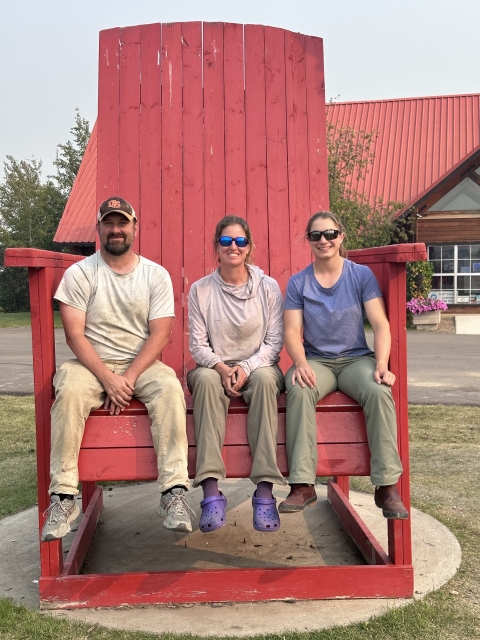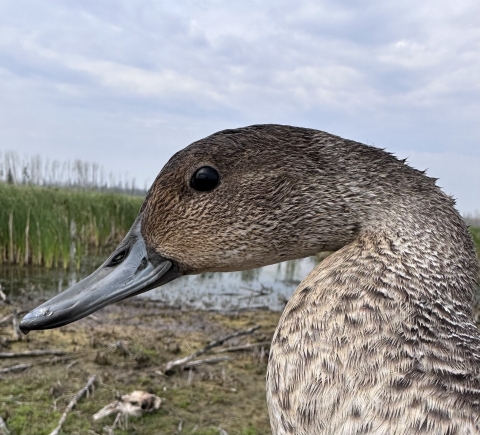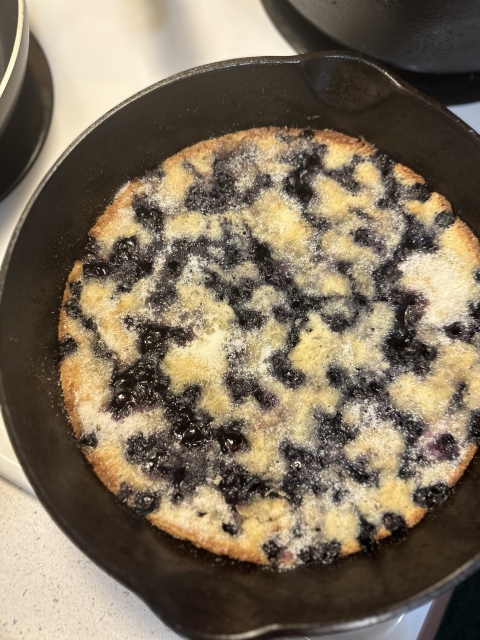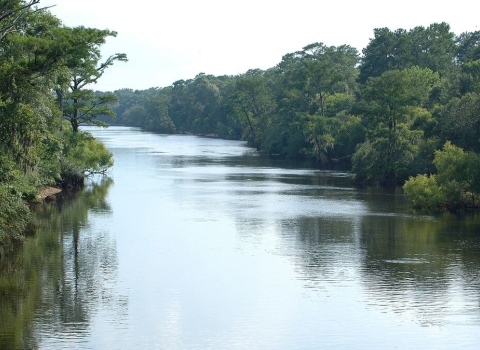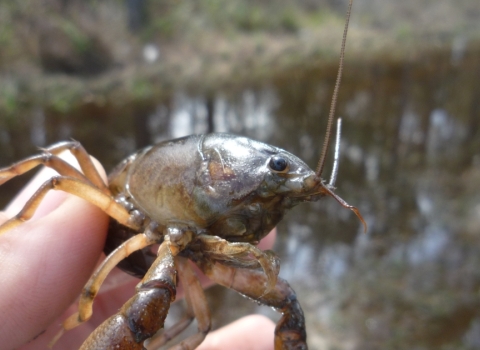When you spend enough years banding ducks in northern Alberta or the Northwest Territories in Canada, you find that each year brings new things into your life: new people, new challenges, and new places. I often think that it’s the allure of these new things that keeps me coming back each year. Or at least those new things coupled with certain familiarities—sitting on a bucket in the marsh, watching flocks of ducks glide to a landing on the edge of a pond, or yellowlegs calling as they circle in flight. It’s always good to be back.
A new crew joined me this year: Jennie Froehly from Upper Mississippi River National Wildlife and Fish Refuge in Minnesota, and Amy O’Donnell from the Service’s Chesapeake Bay Field Office in Maryland. Jennie and Amy are both top notch field biologists and kept me more organized than I ever would have been on my own. Neither had been to northwest Alberta before so this whole experience was new to them. I can’t say enough good things about them as crew and colleagues. They were key to the success of this year’s operation.
This year, conditions in northwest Alberta were a complete reversal from 2022. Our banding location was much dryer which limited the number of sites we were able to band. Instead of a broad marsh we had more isolated boreal ponds and smaller marshes where we could find the ducks. We were able to band a lot of birds on these ponds though! We banded 13 species this year (see chart below for proportions). Most of the catch was blue-winged teal, with a decent number of American green-winged teal, American wigeon, mallards and Northern pintail thrown in. It’s also great to see other wildlife up north other than waterfowl. Bears, moose, wood bison, peregrine falcons, and a hawk owl were a few of our good finds this year. We also saw a bear cub nursing on its mother, which was quite a treat.
A major aspect of the experience this year was witnessing the impact that many large wildfires in Alberta and Northwest Territories had on the residents of these areas. It was difficult to watch the flood of evacuees head south out of Yellowknife and smaller towns like Hay River. It puts the things in your life in perspective as well. You can replace things; you can’t replace people. We wish them a safe return to their homes and everyday lives.
Overall, I think we had a successful year. I’m looking forward to next season, and whatever new and exciting challenges it may bring.
In what has become sort of a tradition, here is a banding camp recipe. This year’s is courtesy of crew member, Jennie Froehly.
Jenny’s Camp Cobbler
Ingredients:
- 1/2 stick butter, melted
- 1/2 cup sugar, plus 1/8 cup sugar, plus 1 tablespoon sugar
- 1/2 cup all-purpose flour
- 3/4 teaspoon baking powder
- 1/4 teaspoon salt
- 1/2 cup milk
- 1 cup frozen blueberries, dusted with flour
Preheat oven to 350 degrees. Butter an 8-inch cast iron skillet. In a medium bowl, whisk 1/2 cup of the sugar with the flour, baking powder, salt and milk. Whisk in the melted butter. Pour the batter into the baking dish. Sprinkle the blueberries evenly over the top of the batter. Sprinkle 1/8 cup sugar over the top. Bake for 25 minutes. Sprinkle the remaining 1 tablespoon of sugar over the top and return to oven; bake 5 more minutes. Serve warm, topped with ice cream or whipped cream.
Make sure crew members have 2 helpings each
Disclaimer: All banding, marking, and sampling is being conducted under a federally authorized Bird Banding Permit issued by the U.S. Geological Survey’s Bird Banding Lab and the Bird Banding Office in Canada.



